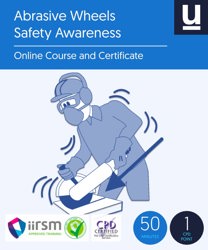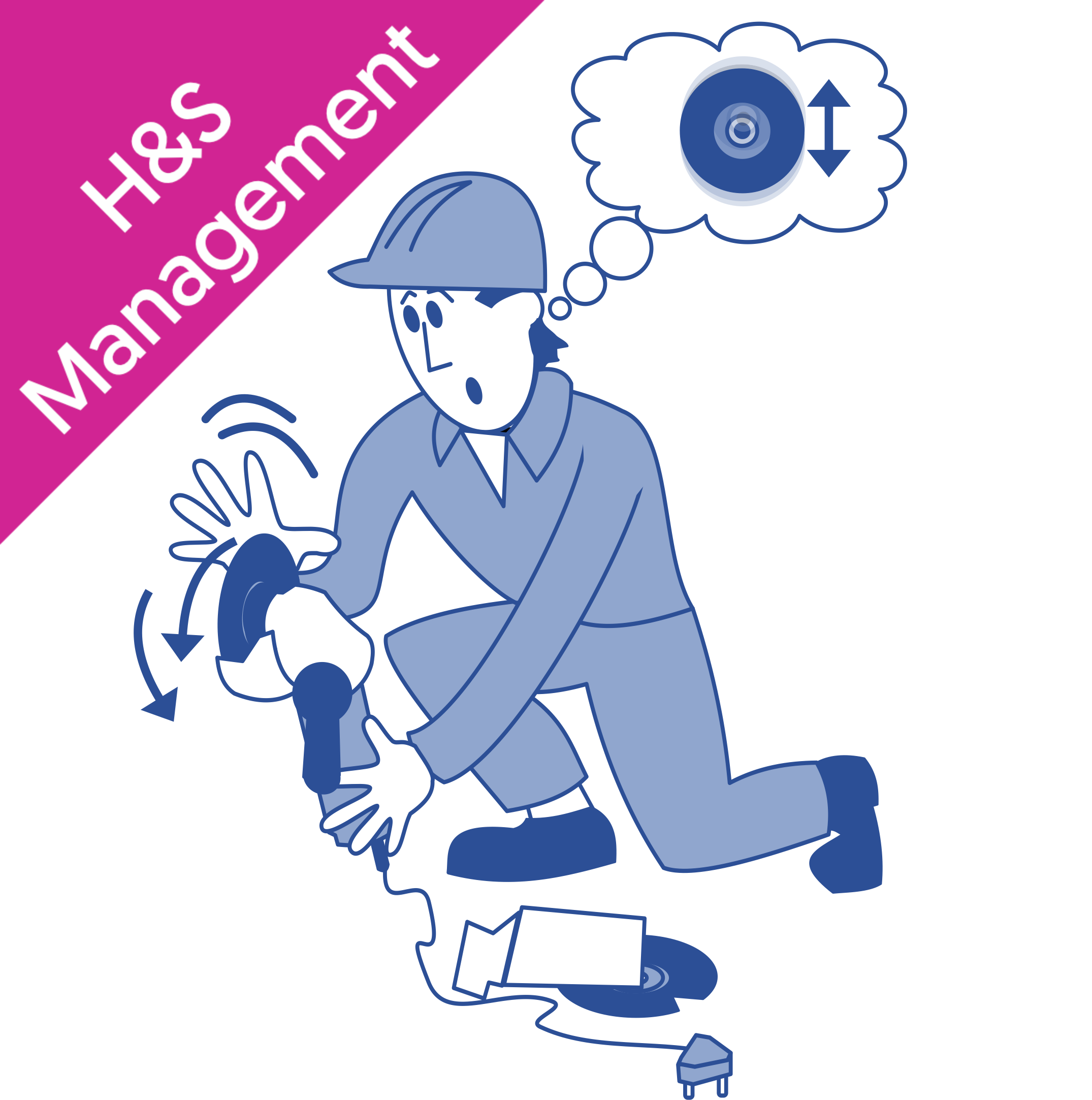Understanding the Abrasive Wheels Marking System
Abrasive wheels, also known as abrasive grinding wheels, are made of abrasive particles bonded with inorganic or organic agents. They are typically used in grinding, cutting and dressing.
To find out more about abrasive wheels, consider doing our Abrasive Wheels Training Course Online which meets the training requirements of HSE, HSG 17, CHAS, SafeContractor, ConstructionLine, Exor, SMAS and other SSIPs.
Regardless of how well it is designed, and how safe it is to use, there is always a risk of a wheel breaking or bursting which can cause serious injury to the user. More often than not, this is caused by improper handling of the abrasive wheel. As a result, it is vital that anyone using an abrasive wheel adheres to all safety measures, including following the information provided by the wheel's markings. If you need more in-depth information on control measures and risks of working with abrasive wheels, consider taking the Abrasive Wheels Training course available on our website.
Standard Abrasive Wheels Marking System
An abrasive wheel's markings must comply with the requirements of the BS EN 12413 and BS ISO 525, which are both standards that aim to reduce the hazards associated with the design and use of abrasive wheels.
An abrasive wheel will be marked with the following information:
Trademark
The trademark is the name of the wheel's manufacturer, and is located at the very top of the wheel.
Test record
A test record is used to indicate that the wheel has been tested and meets the required safety standards.
Expiry date
If the wheel is an organic-bonded wheel used for hand-held applications, it will have an expiry date of three years from the date of manufacture. This date will be marked on the wheel.
Speed stripe
Every abrasive wheel over 80mm in diameter must be marked with its maximum operating speed, which we will look at later. For high speed wheels, this is done using a speed stripe, which is a coloured stripe located in the centre of the wheel. The colour of the stripe represents the following speeds:
- Blue - 50m/s
- Yellow - 60m/s
- Red - 80m/s
- Green - 100m/s
- Blue/Yellow - 125m/s
Dimensions
The dimensions of the wheel in millimetres must be printed on the wheel. There will be three numbers, which indicate the wheel's diameter, thickness and hole size.
Wheel specification
A wheel specification mark is used to indicate the type of abrasive material the wheel is made of, its grit size, the grade, the structure and the bond type. Let's look at how this works using an example mark: WA 603 K6V.
The first two letters refer to the abrasive material used in the wheel, with WA referring specifically to white aluminium oxide, one of the most commonly manufactured types used for grinding steel, iron, bronze and other materials. Some other abrasive material codes include:
- A: Regular aluminium oxide
- 19A: A mixture of A and WA
- SD: Synthetic diamond
- ASD: Synthetic diamond, metal coating
- FA: Semi-friable aluminium oxide
- PA: Pink aluminium oxide
- SA (or HA): Single crystal aluminium oxide
- 23A: A mixture of A and SA
- AZ: Zirconium oxide
- C: Black silicon carbide
- GC: Green silicon carbide
- RC: A mixture of C and GC
The numbers '603' refer to the wheel's grit size, which is the size of the individual abrasive grains in the wheel. This number will range from 10 to 1200, with a lower number indicating a coarser grit size, and a higher number indicating a fine one. Fine wheels are used with hard, brittle materials, and can cut faster because they have more cutting edges, while coarse wheels are used for removing metal from soft, ductile materials where a neat finish is not required.
The next letter, 'K' in our example, indicates the grade of the wheel from soft (A) to hard (Z), and the number that follows it indicates the structure of the wheel and ranges from dense (1) to open (14).
The final letter indicates the bond type, with V standing for a vitrified bond type. Some of the most commonly used bond types include:
- B: Resinoid (wheels with this bond are soft and fast, and can operate at high speeds)
- R: Rubber (wheels with a rubber bond are typically used for smoothing and polishing)
- O: MgO
- E: Epoxy
- M: Metal
- EP: Electroplated
The type of bond used will depend on the nature of the operation, the material to be worked on, the precision required, and the operating speed of the wheel.
Code number
This is a traceable code number that indicates the source and manufacturing details of the wheel.
Maximum operating speed
Using an abrasive wheel at an inappropriate speed is one of the leading causes of accidents, so understanding their maximum operating speed is crucial.
Every abrasive wheel larger than 80mm in diameter should be marked with the maximum permissible speed, unless it has an identification label where this can be specified, and wheels that are 80mm in diameter or smaller must have this information displayed on a notice in a visible place. This ensures that the specifications are easy to read by a person operating the wheel and that any accidents can be prevented.
Some wheels also have restrictions on their use, which are marked alongside its maximum operating speed. The markings used to indicate restrictions are:
- RE1: Not permitted for hand-held and manually guided grinding
- RE2: Not permitted for hand-held cutting-off machines
- RE3: Not permitted for wet grinding
- RE4: Only permitted for fully enclosed working area
- RE6: Not permitted for face grinding
Restrictions on a wheel's use may also be indicated by an additional graphic.
ISO Type Number
An ISO number indicates the wheel's shape. For instance, ISO Type 1 is a straight-sided vitrified wheel.
Mounting instruction
A mounting instruction is an arrow points towards the heaviest point of the wheel. Improper mounting increases the risk of bursting, so it is important that this arrow is pointing down when the wheel is mounted
For more in-depth guidance regarding the marking system, refer to EN 12413 and BS ISO 525. If you’d like to learn more about abrasive wheels read our article: Top 9 Questions about Abrasive Wheels: Answered.
For more information on abrasive wheels and the abrasive wheel marking system, consider taking our abrasive wheels training course:




